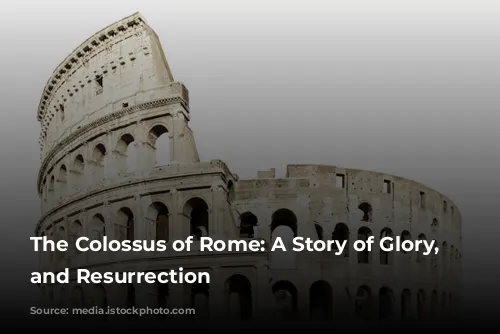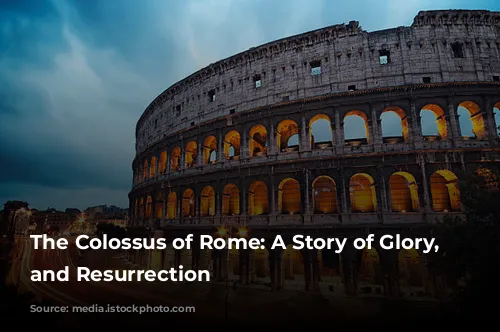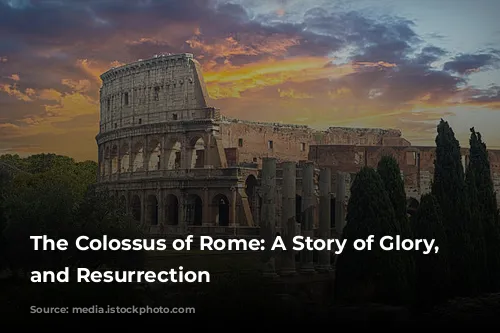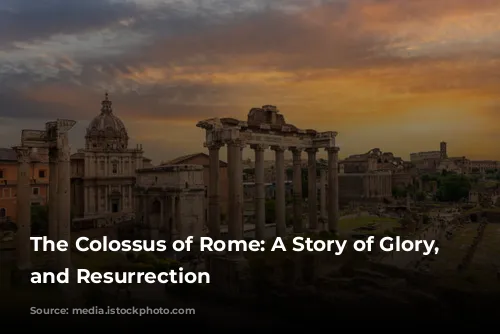The Colosseum, a name whispered with awe and reverence, stands as a testament to the grandeur and brutality of the Roman Empire. It is the largest amphitheatre ever built, a marvel of engineering, and a symbol of Rome’s might. While its official name is the Flavian Amphitheatre, it is the “Colosseum” by which the world knows this iconic structure.
A Monument of Power and Entertainment
Emperor Vespasian, of the Flavia family, initiated its construction, and his son Titus officially opened the Colosseum in 80 AD. The opening ceremony was a spectacle of unimaginable scale, lasting an astounding one hundred days. The Romans reveled in gladiatorial combats, exotic animal hunts, and even staged full-scale sea battles, known as naumachias, with the arena transformed into a watery arena.
The Origins of a Name
But why do we call it the Colosseum? This moniker emerged from a prophecy by the Venerable Bede, a medieval monk. He declared that Rome would stand as long as the Colosseum did, and its fall would signify the demise of the city and the world. The name “Colosseum” likely originates from the colossal statue of Emperor Nero, “the Colossus,” which stood near the amphitheatre and has since vanished.
A Masterpiece of Roman Architecture
The Colosseum is a breathtaking sight, once gleaming white with travertine stone. Its elliptical shape was designed to accommodate a vast audience, with four floors and eighty arches on the first three levels. Statues adorned the upper levels, showcasing the artistry and wealth of Rome.
This colossal structure took less than a decade to build, a testament to the Romans’ mastery of engineering. The secret lay in their innovative use of the arch. This architectural element allowed for efficient weight distribution, perfect for constructing massive structures. Roman aqueducts and the Colosseum itself demonstrate their unparalleled expertise in this technique.
From Glory to Ruins
Today, we see only the skeleton of the once magnificent arena. Time and neglect have taken their toll, leaving only three-fifths of the outer wall intact. During the Middle Ages, the Colosseum was stripped for its valuable materials, used to build other structures, including St. Peter’s Basilica.
A Seat for the Masses
The Colosseum held up to 70,000 spectators, a testament to its colossal scale. The tiered seating was ingeniously designed to provide a clear view for every single person. Entry was free for Roman citizens, but seating was meticulously arranged based on social status. The common people were relegated to the upper tiers, while senators and dignitaries occupied the front rows.
Imagine the roar of the crowd, the scent of sweat and blood, and the blinding sun. To protect the spectators from the elements, the Colosseum employed an ingenious system called the Velarium. This massive linen canopy, operated by one hundred sailors from the Imperial fleet, offered shade from the sun.
Beneath the Arena: A World of Secrets
The arena itself, once a stage for gladiatorial combats and exotic animal hunts, is now gone, replaced by cellars that housed the spectacle’s machinery. These cellars housed lifts and hoists, allowing for dramatic entrances by gladiators and animals. The arena could be transformed with backdrops and scenery, creating a dynamic and immersive experience for the audience.
The Purpose of the Games
The games held in the Colosseum were more than mere entertainment. They served a powerful symbolic purpose, forging a link between the citizens and their leader through shared experiences. They provided a distraction from political turmoil, a sense of community, and a collective release of emotions.
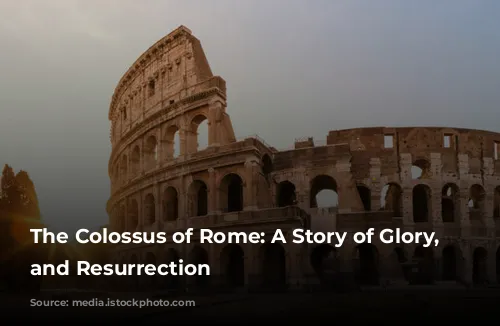
The Spectacles: From Animal Hunts to Gladiatorial Combat
The Colosseum witnessed a wide array of spectacles, each carefully planned and timed. In the morning, the audience enjoyed “Venationes,” hunts featuring exotic animals, and sometimes even public executions where criminals were left to the mercy of ferocious beasts.
The “Silvae” were particularly spectacular, recreating forests filled with animals, often without the need for a fatal outcome. But there were also less brutal performances, like the famous elephant that could write words in the sand.
The most popular event, however, was the gladiatorial combat. The midday break saw the arena cleaned and prepared for the spectacle. As trumpets blared and drums pounded, gladiators would emerge from underground tunnels, greeted by the roars of the crowd.
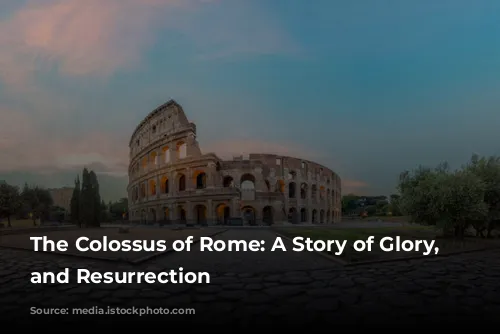
The Gladiators: Warriors of the Arena
The gladiators were a diverse group, ranging from prisoners of war to desperate paupers seeking fame and fortune. They were revered as heroes, and their popularity often extended beyond the arena walls.
There were twelve different types of gladiators, each with their unique weapons and fighting styles. Their battles were meticulously choreographed, creating a captivating blend of skill and brutality. The audience held the power to decide the fate of a wounded gladiator, with a thumbs up signifying mercy, and a thumbs down condemning them to death.
Victorious gladiators were showered with rewards, including gold, money, and the adoration of the crowd. However, behind the spectacle, a brutal reality lurked. Servants, dressed as Charon, the Ferryman of the Underworld, ensured that the wounded were truly dead, and the blood of the gladiators was even believed to possess healing powers.
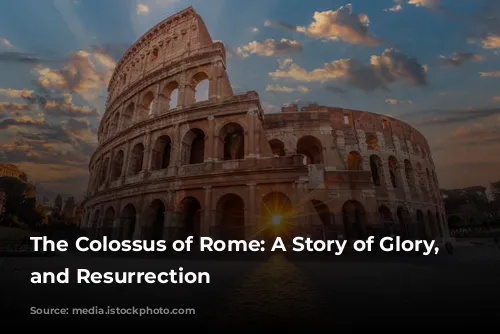
The Legacy of the Colosseum
The Colosseum stands as a powerful reminder of the Roman Empire’s grandeur, its brutality, and its enduring legacy. While it fell into disuse and ruin after the sixth century, it has since become a revered landmark, a symbol of Rome’s past and a destination for millions of visitors each year.
From its use as a quarry to its designation as a sacred monument, the Colosseum has been a constant presence in the heart of Rome. Its story echoes through the centuries, reminding us of the power of human ingenuity, the brutality of the past, and the enduring resilience of history. As Charles Dickens wrote, it is “the ghost of old Rome floating over the places its people walk in,” a timeless reminder of an empire that once ruled the world.
